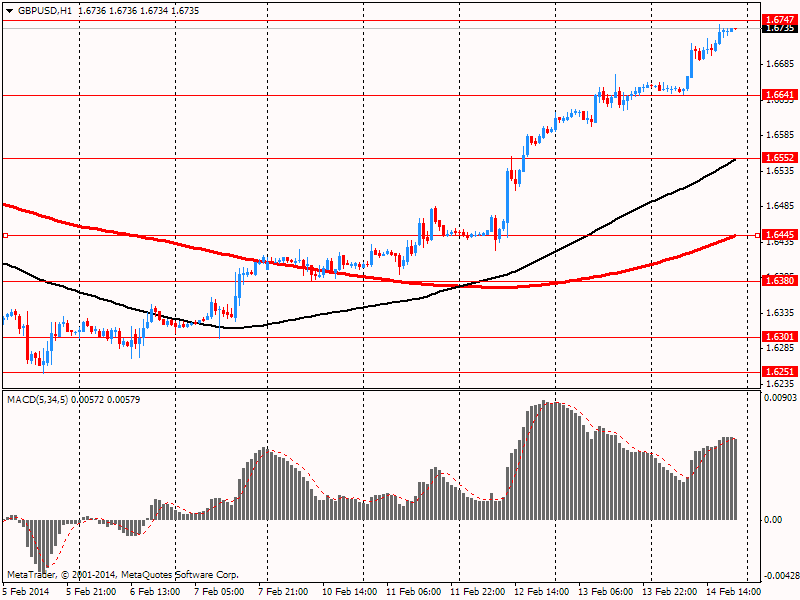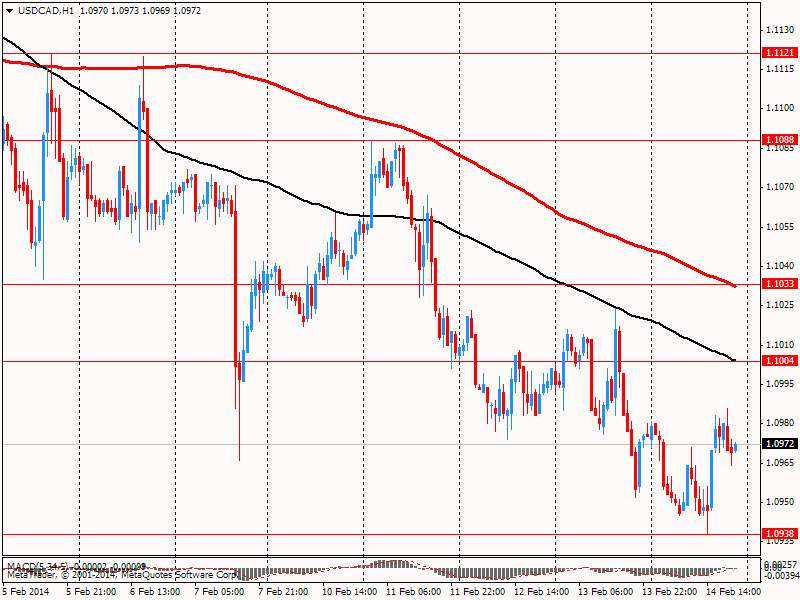- Analytics
- News and Tools
- Market News
- American focus : the pound has appreciated strongly against the U.S. dollar
American focus : the pound has appreciated strongly against the U.S. dollar
Rate of the euro retreated from the maximum values against the dollar, which was achieved after the release of Eurozone GDP , but continues to trade with a slight increase . Pressure on the currency was the U.S. data , which showed that import prices rose a second straight month in January by 0.1 percent after increasing 0.2 percent in December. In January, higher non-fuel prices offset lower fuel prices . Export prices also rose in January by 0.2 percent after rising 0.4 percent in December . January's growth was accompanied by higher non-fuel prices , while the increase in December was due to rising fuel prices . Despite the increase , the overall import prices decreased by 1.5 percent for the year ending in January.
In addition , the decline was due to the publication of the preliminary results of the study, which were presented to Thomson-Reuters and the Michigan Institute . They showed that in February, U.S. consumers feel about the economy and how it was recorded last month. According to preliminary February consumer sentiment index remained at the final reading of 81.2 in January . It is worth noting that according to the average estimates of experts , the index was down compared to the January to reach a value of 80.6 .
Pound was up against the U.S. dollar , reaching maximum values in nearly two years . Most of the rally pound associated with expectations that the Central Bank will raise rates sooner than previously thought. Strategists note that departure from the Bank of England " transparency policy " allowed to revise forecasts for rate increase for shorter periods . However, next week is expected to publish the IFA protocol , which will reflect a unanimous vote, and the CPI at the target level of 2% as a reminder that needed a lot of time ( experts remain forecast Q3 . 2015 with increasing risk in the 1st half of 2015 ) . In the labor market , the focus will be price increases on wages as a leading indicator of future inflation . Anemic wage growth may also reduce rate hike expectations .
The Canadian dollar fell sharply against the U.S. dollar after data showed that Canadian supply industry in the manufacturing sector fell unexpectedly in December , showing the biggest monthly decline in eight months , amid weak demand for aircraft , vehicles and metals. This was reported by Statistics Canada on Friday .
Industrial sales fell 0.9 % on a monthly basis to 49.87 billion Canadian dollars ( $ 45.55 billion ) , while market expectations were at 0.3% growth . In volume terms, the shipments index fell 1.9 % , the largest decline during the year.
Meanwhile, data on industrial supplies for November were revised downward and now showed that sales rose by only 0.5 % per month, or half the original estimates an increase of 1.0%.
© 2000-2024. All rights reserved.
This site is managed by Teletrade D.J. LLC 2351 LLC 2022 (Euro House, Richmond Hill Road, Kingstown, VC0100, St. Vincent and the Grenadines).
The information on this website is for informational purposes only and does not constitute any investment advice.
The company does not serve or provide services to customers who are residents of the US, Canada, Iran, The Democratic People's Republic of Korea, Yemen and FATF blacklisted countries.
Making transactions on financial markets with marginal financial instruments opens up wide possibilities and allows investors who are willing to take risks to earn high profits, carrying a potentially high risk of losses at the same time. Therefore you should responsibly approach the issue of choosing the appropriate investment strategy, taking the available resources into account, before starting trading.
Use of the information: full or partial use of materials from this website must always be referenced to TeleTrade as the source of information. Use of the materials on the Internet must be accompanied by a hyperlink to teletrade.org. Automatic import of materials and information from this website is prohibited.
Please contact our PR department if you have any questions or need assistance at pr@teletrade.global.


















